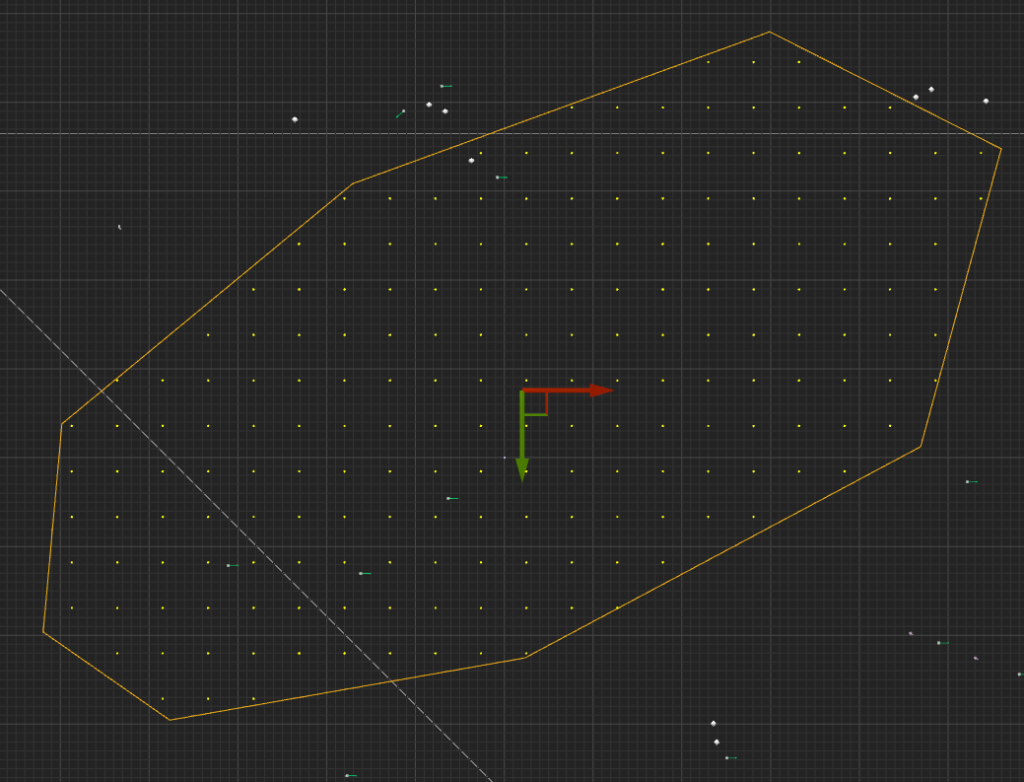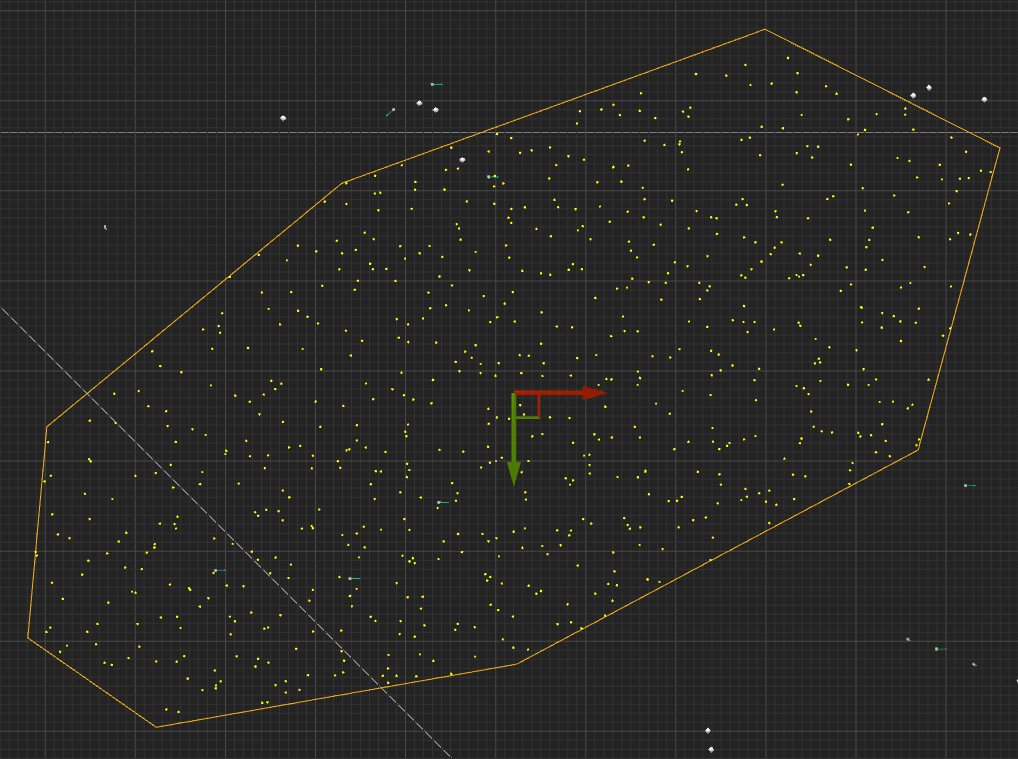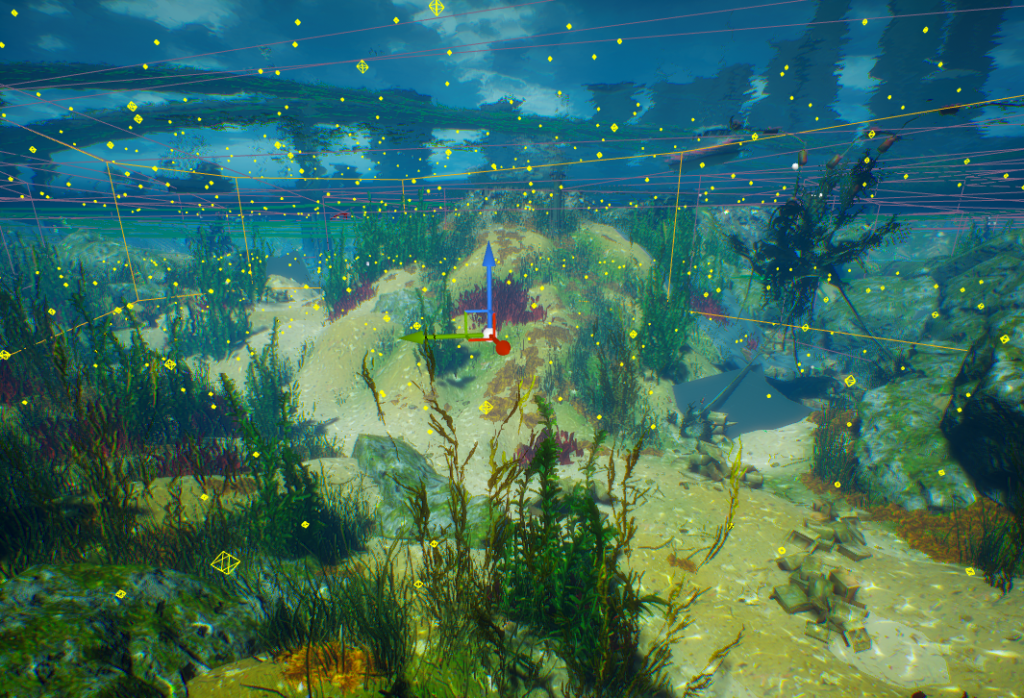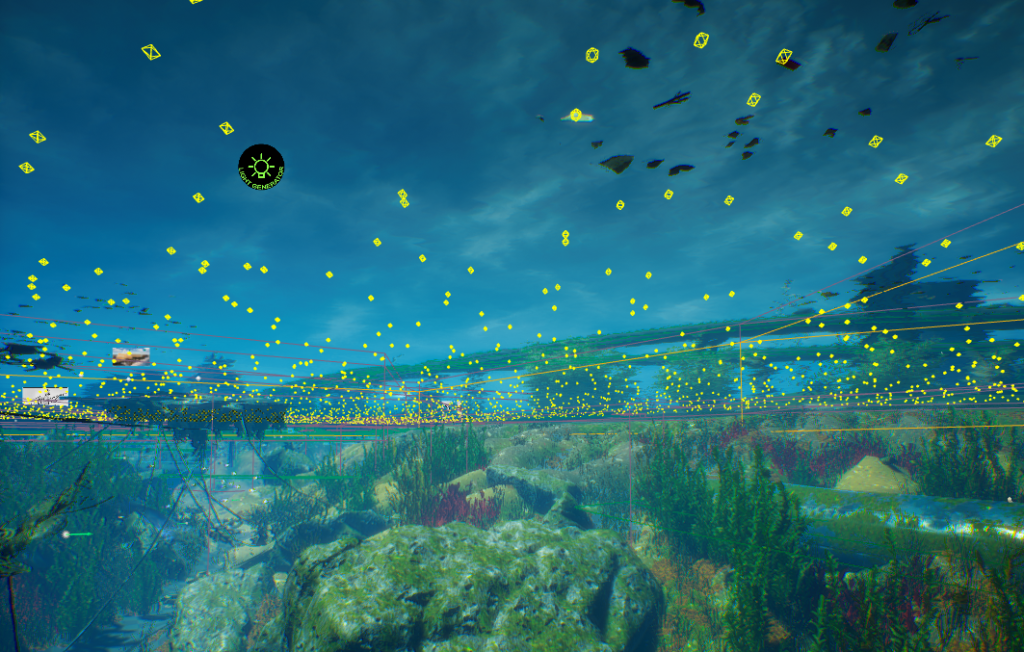Generation flexibility
Flexibility should be extremely easy to implement and extremely easy for designers to use. To that end, our grid generation has a bunch of options around how it can change grid point generation. Note: I’m going to use a hilariously dense set of volumes as examples – none of the runtime volumes are this dense, but it’s far easier to visualize this way. Let’s start with a dead simple volume – straight axis aligned grid generation. That gives us something like this:

Now, it’s functional, but what you aren’t seeing is that it’s also stacked in three dimensions. Despite the underwater fog, it can still be fairly obvious that things are spawning against a grid. To solve that, let’s give it a bit of randomization to offset the final test point from the initial location:

This small change made things much better. If we drop down into 3D space, then this is definitely filling the area well:

However, that only works well for wildlife that want to spawn underwater while swimming. Boats don’t want to spawn there – they’d sink. To solve that, I went ahead and added the concept of generation types. For example, with boats I have a type that generates at the ground layer – either where the landscape exists, or at the water’s surface. From our underwater perspective, that ends up looking something like this:

Let’s say we instead need to spawn some AI, but we only want to spawn them in areas where they can be on valid navigation. For that, we’ve got a generation type that only uses valid spawn points projected onto a nav mesh. That ends up giving us something like this:

By implementing the concept of grid types, I was able to give the designers a lot of flexibility in laying out volumes that took advantage of the convenience and coverage of volumes, but were still a bit more special case than just simple grids.
